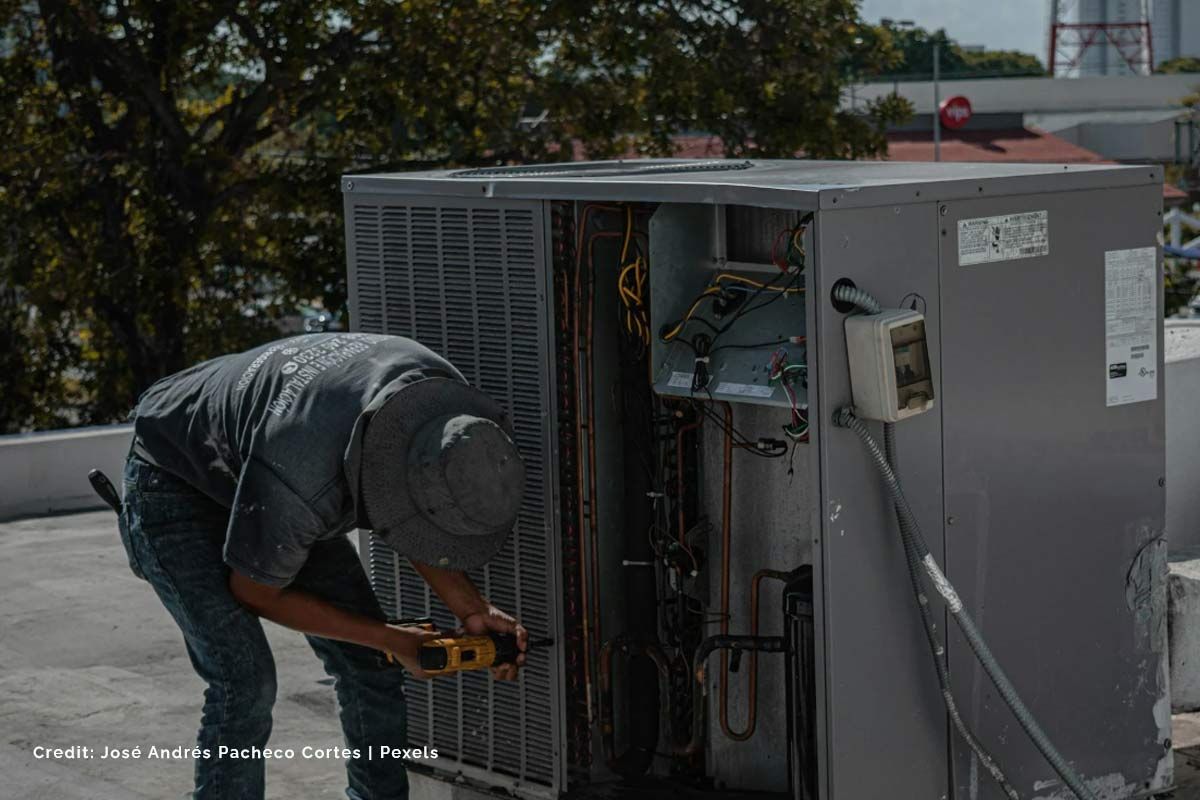As summer approaches, temperatures rise, and your HVAC system becomes the unsung hero of your home, working overtime to keep you cool and comfortable. However, the increased strain on your heating, ventilation, and air conditioning unit can reveal underlying issues that, if ignored, could lead to costly breakdowns. Knowing the common HVAC problems to watch for and understanding how to fund unexpected repairs can save you from sweltering discomfort and financial stress. This article explores the most frequent summer HVAC issues, preventive measures, and financial solutions to keep your system running smoothly.
5 Common HVAC Problems in Summer
Summer heat puts significant pressure on HVAC systems, often exposing weaknesses that might go unnoticed in milder seasons. Here are the most common issues to watch for:
1. Refrigerant Leaks
Refrigerant is the lifeblood of your air conditioner, absorbing and dissipating heat to cool your home. Leaks, often caused by wear and tear or corrosion, reduce cooling efficiency, forcing the system to work harder. You might notice warm air blowing from vents, higher energy bills, or hissing sounds near the unit. A professional technician can locate and repair leaks, but neglecting them could damage the compressor, leading to a costly replacement. Regular maintenance, like checking refrigerant levels before summer, can catch issues early.
2. Clogged Air Filters
Air filters trap dust, dirt, and debris, but during summer, they can become clogged quickly due to constant use. A dirty filter restricts airflow, reducing efficiency and causing the system to overheat. This not only spikes energy costs but can also lead to frozen evaporator coils, halting cooling entirely. Homeowners should replace or clean filters every one to three months, depending on usage and
household factors like pets or allergies. This simple task can prevent more significant problems down the line.
3. Thermostat Malfunctions
A faulty thermostat can wreak havoc on your HVAC system, causing erratic cooling or failure to turn on. Summer humidity can exacerbate issues, especially with older, non-programmable models. Signs include inconsistent temperatures or a unit that won’t respond to settings. Upgrading to a smart thermostat can improve efficiency, but if replacement isn’t in the budget, recalibrating or replacing batteries might resolve minor glitches. Always consult a technician for persistent issues.
4. Electrical Component Failures
The constant cycling of an HVAC system in summer stresses electrical components like capacitors, relays, and contactors. A failed capacitor, for instance, might prevent the fan or compressor from starting, leaving you without cool air. Warning signs include humming noises, frequent system shutoffs, or tripped circuit breakers. Regular inspections can identify worn parts before they fail, but unexpected breakdowns often require immediate attention to avoid prolonged discomfort.
5. Drain Line Blockages
Your HVAC system removes moisture from the air, which drains through a condensate line. In summer, algae, mold, or debris can clog this line, causing water backups that may damage your unit or home. Overflowing drain pans or water pooling near the unit are red flags. Flushing the drain line with a vinegar solution monthly can prevent clogs, but severe blockages may need professional cleaning to restore proper function.
Preventive Maintenance Tips
Proactive care can minimize the risk of HVAC failures during peak summer heat. Schedule a professional tune-up in late spring to check refrigerant levels, clean coils, and inspect electrical components. At home, keep the outdoor unit free of debris like leaves or grass clippings, and ensure proper airflow by maintaining at least two feet of clearance around it. Regularly check and replace air filters, and monitor your thermostat for accuracy. These steps reduce strain on the system, improve efficiency, and extend its lifespan.
Despite your best efforts, unexpected breakdowns can still occur. A sudden repair bill can strain your budget, especially if the issue requires replacing major components like a compressor or evaporator coil. Fortunately, financial solutions are available to help you manage these costs without delay.
Funding HVAC Repairs
When an HVAC system fails in the middle of a heatwave, quick access to funds can make all the difference. Here are three practical options to cover repair costs, each tailored to different financial needs:
For homeowners worried about credit history,
no credit check loans offer a lifeline. These loans prioritize income and employment over credit scores, making them accessible to a wide range of borrowers. With fast approval processes, you can secure funds to fix your HVAC system within hours, ensuring your home stays cool. Repayment terms are flexible, allowing you to spread costs over time without overwhelming your budget. This option is ideal for urgent repairs when credit concerns might otherwise delay action.
Larger repairs, such as a compressor replacement,
may require larger installment loans for emergencies. These loans offer higher amounts than payday loans, with longer repayment periods to ease the financial burden. You can apply online, and approval is often swift, even for those with less-than-perfect credit. Installment loans allow you to tackle significant HVAC issues without draining savings, giving you peace of mind during a stressful breakdown.
Choosing the Right Financing Option
Selecting the best funding method depends on the repair’s scope and your financial situation. For minor fixes, an Ontario payday loan might suffice, offering quick cash with a short repayment window. For more extensive repairs or if credit is a concern, no credit check loans or installment loans for emergencies provide greater flexibility and higher limits. Always review terms carefully, ensuring repayments align with your income. Consulting with a reputable lender can clarify which option suits your needs, helping you restore comfort without financial strain.
Long-Term Considerations







